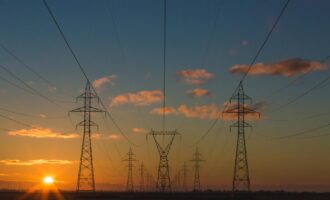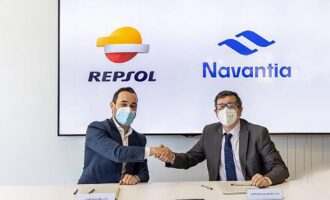
Business model innovation is key during the energy transition
Business model innovation could be the key to success and accelerate new business growth in the face of the energy transition, according to Mia Krishna Anggraini, vice president of New Ventures at PT Pertamina (Persero), Indonesia’s state-owned oil and gas company. She spoke during a recent Pertamina Energy Webinar in Jakarta.
“Business model innovation can be carried out through an incubation process where the SPPU Directorate’s New Ventures supports the development of Pertamina Group’s new business by providing the required incubation ecosystem,” she said.
As one of the largest state-owned enterprises (SOEs) in Indonesia, Pertamina plays an important role in leading the energy transition and emission reductions in the energy sector, said Iman Rachman, director of Strategy, Portfolio, and Business Development.
“Pertamina has prepared an energy transition through the 2020-2024 RJPP (Long Term Corporate Plan) with a target of reducing carbon dioxide (CO2) emissions by 29% by 2030,” he said.
Iman added that Pertamina’s aspirations in implementing green and sustainable energy were translated into eight pillars of the energy transition. It includes increasing refinery specifications to produce environmentally friendly fuels, developing bioenergy such as biomass and bioethanol, optimizing potential and increasing installed geothermal capacity, and developing green hydrogen.
Pertamina is also taking a strategic role in the production and development of the battery ecosystem in Indonesia, strengthening integrated gasification, increasing the utilization of New and Renewable, and Low Carbon Energy to reduce the carbon footprint, and utilizing Carbon Capture, Utilization, and Storage (CCUS) to utilize carbon for increased production of several oil and gas fields.
Regarding CCUS utilization, Pertamina has established a collaboration with ExxonMobil, which was signed at the United Nations (UN) Climate Change Summit in Glasgow, Scotland, in November.
According to Alfian Nasution, president director of PT Pertamina Patra Niaga, which is focused on fuel trading, fuel handling, fleet management and depot management, the Pertamina subsidiary is developing 391 units of public electric vehicle battery exchange stations (SPBKLU) and public electric vehicle charging stations (SPKLU).
“Pertamina initiates the SPKLU business through a partnership scheme and is integrated with the MyPertamina application,” he said.
Pertamina Patra Niaga is targeting the construction of 513 SPKLU/SPBKLU units by 2024 as part of Pertamina’s energy transition strategy. The 513 units consist of 122 SPKLU units and 391 SPBKLU units. However, Alfian said that support or incentives from the government are needed to overcome the economic challenges of the electric vehicle (EV) business.
Alfian cited the need to introduce incentives and regulations to advance the adoption of electric vehicles, including free or discounted installation of new customer IDs, bulk tariffs for SPKLU/SPBKLU, free subscriptions for a minimum of two years, and incentives for EV users to reduce the total cost of ownership (TCO).
Furthermore, the necessary technology-related support includes the need for flexibility in SPKLU technology (at least one socket for SPKLU) and standardization of batteries for two-wheeler battery electric vehicles (KBLBB).
Dannif Danusaputro, president director of PT Pertamina Power Indonesia, the power and new renewable energy subsidiary of Pertamina, said the battery business and electric vehicles are the businesses of the future.
“PNRE’s vision is to lead Pertamina’s energy transition through the development of carbon solutions, new renewable energy, and building future businesses in the energy sector,” he said.
Pertamina Power Indonesia is targeting the construction of 10,000 megawatts (MW) of low-carbon solutions, of which 40% will come from gas generation and decarbonization. In addition, 50% will come from geothermal, solar, hydro, biomass and biogas, wind and tidal, and waste. Up to 10% in future businesses will come from batteries and electric vehicles, hydrogen, carbon markets, and green industrial complexes.
Meanwhile, Erry Widiastono, president director of PT Pertamina International Shipping (PIS), said the subsidiary’s restructuring has strengthened the company’s business value chain, allowing it to become an end-to-end marine logistics provider. It covers shipping to marine services, port operations and services, port asset ownership, marine logistics storage, and other support services.
“Restructuring allows PIS to focus on developing its business, increasing operational efficiency and company value,” he said.
PIS had a higher financial and operational performance in 2021 than in 2020, with a 27% increase in net income and a 142.6% improvement in net income margin as a result of the increased business scale. In the future, PIS will increase its capacity and aspire to become a leading integrated marine logistics company within the Association of Southeast Asian Nations (ASEAN). PIS has formulated a roadmap toward a green integrated marine logistics company to support Pertamina’s efforts in carbon footprint reduction.
The 2021 Pertamina Energy Webinar, with the theme “Energizing Your Future,” was held to promote shared knowledge about technology and business innovation and stimulate strategic discussions. Pertamina Energy Outlook 2021 contains Pertamina’s view of the future of the energy sector, both in terms of production and consumption.









